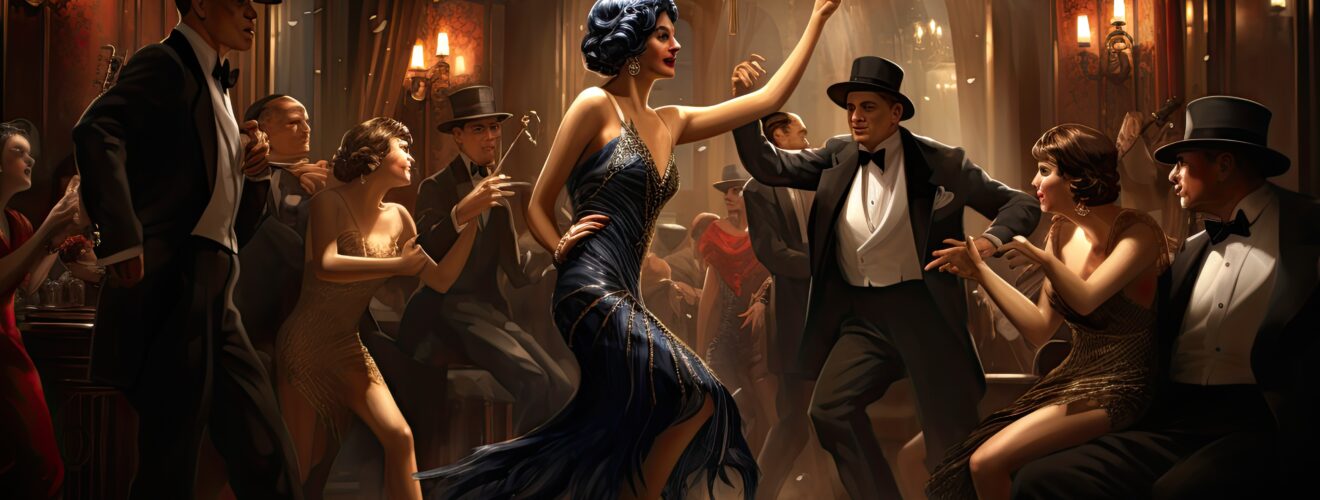The Roaring Twenties – Jazz Age and Flappers

The Roaring Twenties, often referred to as the Jazz Age, was a vibrant and transformative decade in the United States that followed the end of World War I. This period was characterized by significant cultural, social, and economic changes. Two prominent aspects of the Roaring Twenties were the rise of jazz music and the emergence of a new, more liberated style of young women known as flappers.
Jazz Age,
Jazz Music
Jazz emerged as a distinctive and influential musical genre during the Roaring Twenties.
African American musicians played a crucial role in the development and popularization of jazz.
Jazz was characterized by its improvisational nature, syncopated rhythms, and a fusion of various musical traditions.
Harlem Renaissance
The Harlem Renaissance, centered in the Harlem neighborhood of New York City, was a cultural and artistic movement that celebrated African American creativity.
Jazz played a central role in the Harlem Renaissance, with famous musicians like Louis Armstrong and Duke Ellington contributing to its vibrancy.
Dance and Nightlife
Jazz music fueled a lively social scene, with people flocking to speakeasies (illegal bars during Prohibition) and dance clubs.
Popular dances of the era, such as the Charleston and the Lindy Hop, became emblematic of the Jazz Age.
Flappers,
Flapper Culture
Flappers were young women of the Roaring Twenties who challenged traditional gender norms and societal expectations.
They were known for their bold fashion choices, short bobbed hairstyles, and rejection of Victorian-era restrictions on women.
Fashion
Flapper fashion was characterized by knee-length dresses with loose, straight silhouettes, often adorned with fringe or beading.
The dropped waistline and the use of bold colors and patterns were distinctive features of flapper attire.
Behavior and Attitude
Flappers were associated with a more liberated lifestyle, participating in activities such as smoking, drinking, and dancing.
They represented a departure from the conservative values of the previous generation.
Symbol of Change
The flapper became a symbol of the changing social dynamics and increased independence of women in the 1920s.
This era marked a shift in societal attitudes towards women’s roles and paved the way for greater gender equality in the decades to come.
The Jazz Age and the flapper culture were emblematic of the spirit of rebellion, freedom, and modernism that characterized the Roaring Twenties. These cultural shifts reflected the desire of many to break away from the constraints of the past and embrace a more dynamic and progressive way of life.








